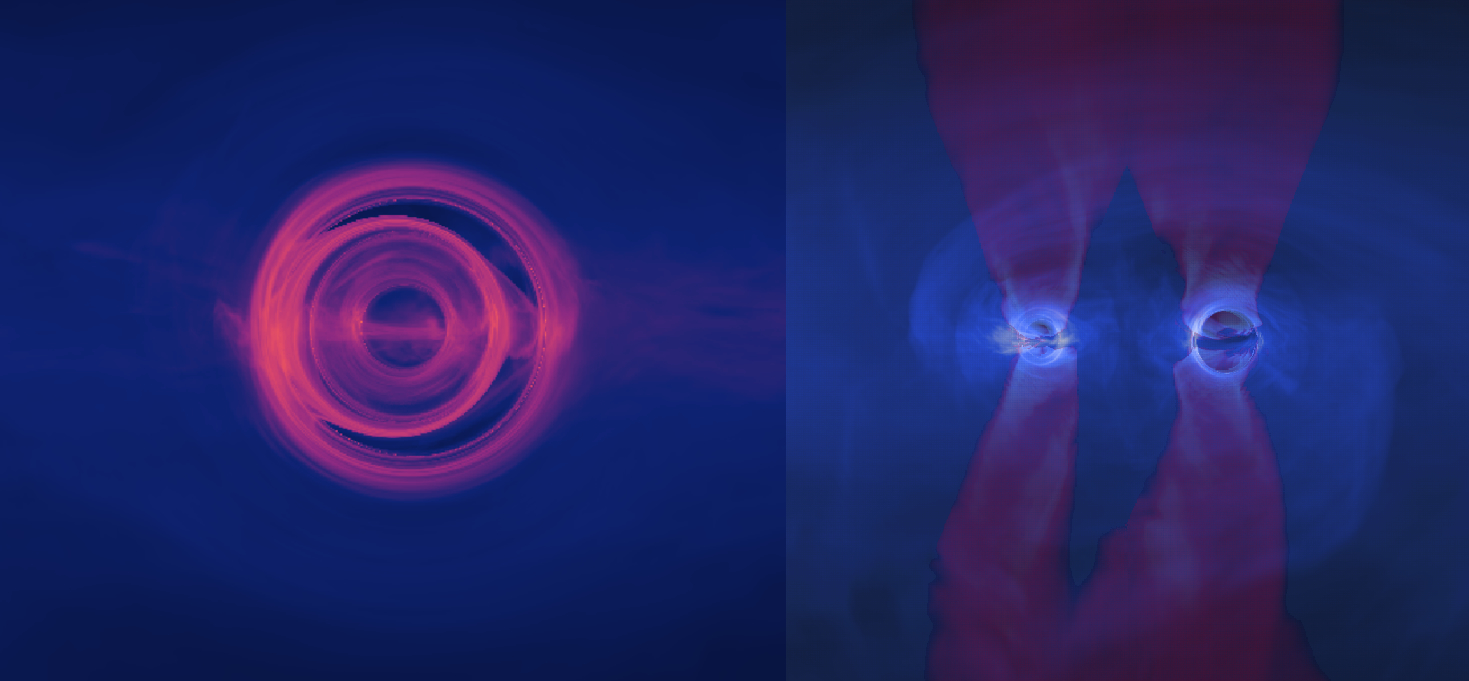Supermassive Binary Black Holes
Electromagnetic emission from supermassive binary black holes approaching merger

Research Questions
- How can we identify the presence of two supermassive black holes orbiting each other through electromagnetic emission?
- What are the specific electromagnetic signatures one could expect to observe from these systems?
- If the black holes produce relativistic jets, how do they interact between themselves?
Overview
Theoretical models predict that when two galaxies merge, the supermassive black holes at their nuclei might end up forming close binary systems of sub-parsec scales. The gravitational waves emitted by these systems are targets of current Pulsar Timing Arrays and of future interferometers such as LISA (Laser Interferometer Space Antenna).
Unlike most stellar-mass black hole mergers, supermassive black hole binaries (SMBHBs) live and die in gas-rich environments (the cores of galaxies) and they can present similar phenomenology to single AGNs; namely, accretion disks, jets and the subsequent multi-wavelength emission.
A detailed knowledge of the main radiation signatures from these systems is crucial to differentiate them from normal AGNs and to identify potential targets for multi-messenger observations.
Research Approach
Using data from GRMHD simulations of these systems, we produce realistic ray traced images, spectra, and lightcurves at different wavelengths. We explore the influence of the black hole spin, accretion rate, and line-of-sight inclination on these products and identify specific features that may discriminate SMBHBs from normal AGNs.